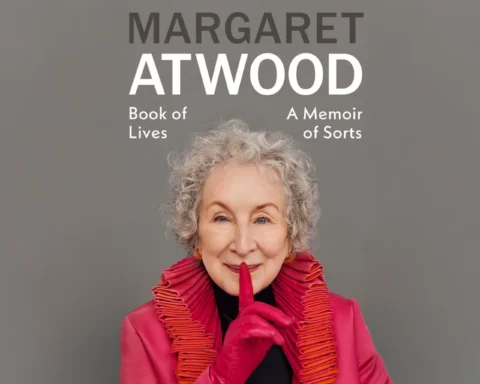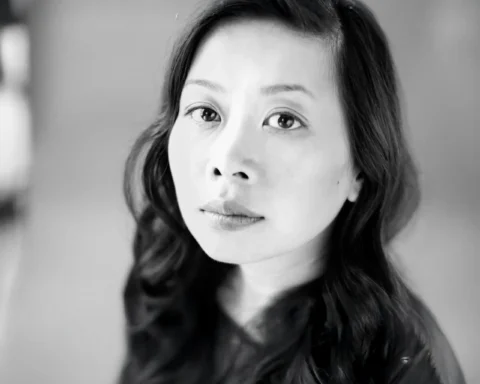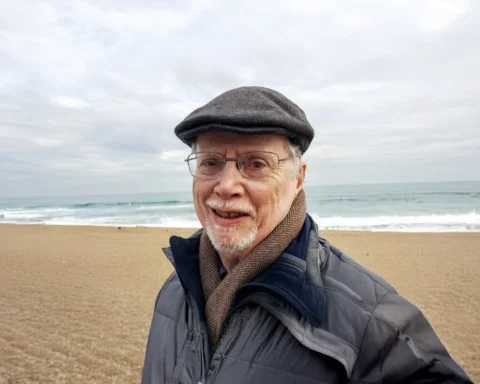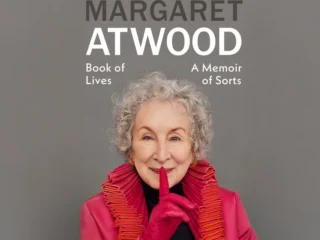For Rachel
–By J.S. Porter
My daughter has a tattoo on her left shoulder – “To Thine Own Self Be True” from Shakespeare’s Hamlet. There are probably another two or three dozen lines from the play that she might have inked on her arms or back. Personally, I might go with “Old men forget” from King Lear or “Exit, pursued by a bear” from The Winter’s Tale since I’m much closer to forgetfulness and exiting than my daughter is.
Shakespeare is not the only artist you can ink.
Go back to Peter Greenaway’s The Pillow Book (1996) and take another look at the beauty of script on skin. Consider the strange attractiveness of Noomi Rapace as Lisbeth Salander in the Swedish film, The Girl with the Dragon Tattoo (2007), where skin is a canvas on which art can be created. Think Angelina Jolie and Rihanna.
My favourite tattoo on Angelina Jolie’s body is from Tennessee Williams: “A prayer for the wild at heart, kept in cages.” Jolie says, “I am still at heart—and always will be—just a punk kid with tattoos.”
Pop princess Rihanna sports a range of tattoos, all delicately placed on her body like small inked masterpieces—cascading stars down her neck and back, a star in her ear, a musical note on her ankle, a Pisces sign behind her ear, a Sanskrit prayer on her thigh, an Arabic phrase on her ribcage, “rebelle fleur” on her neck, a “shhh” on her right index finger.
(i) Gertrude Stein
Compared to the svelte Rihanna, the rotund Gertrude Stein had the face and body of a Roman emperor. Stein pronounced like an emperor, held court like a movie star and was “The Presence” at 27 rue de Fleurus where Picassos and Matisses hung from her walls and supplicating young writers paid homage.
A mother of modernism, she wrote as a mischievous leprechaun might – cryptically, sometimes hermetically. Godmother of Hemingway’s first child and his early muse and mentor, she learned to do cubism in language and then taught Hemingway to do the same in his poetic vignettes, in our time, and his subsequent collage of stories and the same poetic vignettes, In Our Time, his first and last modernist works.
Along with Hemingway in A Moveable Feast and our own John Glassco in Memoirs of Montparnasse, Stein wrote one of the great Paris books of the age – The Autobiograhy of Alice B. Toklas– her autobiography disguised as a biography.
Stein’s most famous sentence is “A rose is a rose is a rose is a rose,” four thumps rather than the often misquoted three. She seemed to write this line conscious of Shakespeare and what Juliette said to Romeo – “What’s in a name? That which we call a rose. By any other name would smell as sweet.” Not according to Gertrude Stein.
Pick your body part. Any one of these Steinian lines would look good on it:
Let me listen to me and not to them.
There ain’t no answer. There ain’t gonna be any answer. There never has been an answer. That’s the answer.
You look ridiculous if you dance. You look ridiculous if you don’t dance. So you might as well dance.
It is awfully important to know what is and what is not your business. If you knew it all, it would not be creation but dictation.
(ii) Jack Kerouac
Jack Kerouac (1922-1969) was born a Catholic in a French-Canadian community in Lowell, Massachusetts. He was the key figure of the cultural phenomenon of the 1950s known as the Beat Movement. Beat as in beatific, as rhythm, beat as in beaten down, exhausted, beat as in defeated. Throughout his life, he sought a fusion of his Catholicism with his Buddhism, Christ with the Buddha. Allen Ginsberg’s Howl acknowledges Kerouac as the “new Buddha of American prose.”
A reader once described Jack Kerouac’s On the Road as “a map of someone’s heart.” Every book he wrote, every line, was a mark on the map of his heart.
Beat philosopher and author of Naked Lunch, William S. Burroughs, summarized Kerouac’s reach and impact in these words:
“Jack Kerouac was a writer. That is, he wrote. Many people who call themselves writers and have their names on books are not writers and they can’t write, like a bullfighter who makes passes with no bull there. The writer has been there or he can’t write about it. And going there, he risks being gored… [Kerouac] went there and wrote it and brought it back for a generation to read, but he never found his way back. A whole migrant generation arose from Kerouac’s on the road to Mexico, Tangier, Afghanistan, India.”
A New York Times critic once said that if you don’t read poetry you’ll never have your heart broken by language. The same goes for Kerouac. If you don’t read Kerouac, you may never have your heart broken by sentences like this:“…the only people for me are the mad ones, the ones who are mad to live, mad to talk, mad to be saved, desirous of everything at the same time, the ones who never yawn or say a commonplace thing, but burn, burn, burn like fabulous yellow roman candles exploding like spiders across the stars.”
Maybe that’s too long a sentence for a tattoo unless you want your whole back inked. How about these?
One day, I will find the right words, and they will be simple.
Live, travel, adventure, bless, and don’t be sorry.
The road is life
The beauty of things must be that they end.
Don’t think. Just dance along.
If I could only wear one Kerouac, it would be, “The secret of writing is in the rhythm of urgency.”












